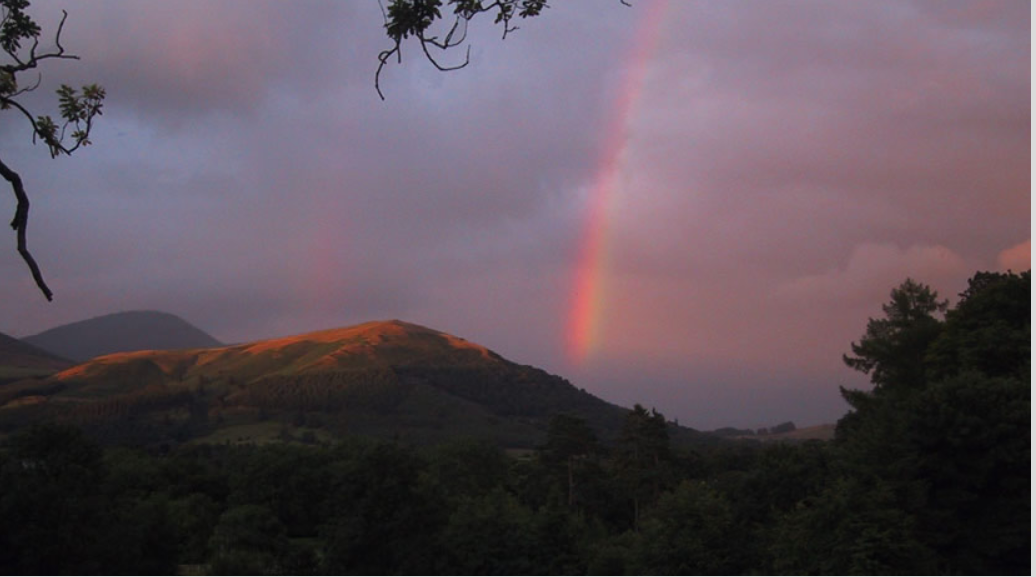Red Rainbows
Exploring the Phenomenon of Red Rainbows
Have you ever witnessed a stunning sunset or sunrise, where the sky is ablaze with vibrant hues of red and yellow? These awe-inspiring displays are often accompanied by an intriguing optical phenomenon known as red rainbows. In this article, we will delve into the world of red rainbows, uncovering the science behind their formation and the conditions necessary for their occurrence.
Understanding the Science Behind Red Rainbows
To comprehend the formation of red rainbows, we must first understand how sunlight interacts with the Earth's atmosphere. During sunrise and sunset, when the sun is positioned low on the horizon, sunlight has to traverse a longer path through the lower atmosphere. Along this journey, the sunlight encounters air molecules and dust particles, which scatter its various wavelengths.
The shorter wavelength blues and greens are scattered more strongly than the longer wavelength reds and yellows. As a result, the transmitted light that reaches our eyes during these magical moments is enriched with red and yellow tones, painting the sky with a vivid palette of colors.
The Role of Sunlight and Atmospheric Conditions
The occurrence of red rainbows is intricately tied to specific atmospheric conditions. Several factors influence their formation, including the angle of the sun, the presence of water droplets or rain, and the amount of dust or other particulate matter in the air.
When the sun is low on the horizon, its rays pass through a greater thickness of the Earth's atmosphere. This increased path length allows for more scattering and enhances the chances of observing a red rainbow. Additionally, if there are raindrops or water droplets in the air, they can act as tiny prisms, further bending and dispersing sunlight to create a more pronounced effect.
The Enigmatic Beauty of Red Rainbows
Red rainbows exhibit a unique and mesmerizing beauty that sets them apart from their more commonly observed counterparts. While traditional rainbows consist of a full spectrum of colors, red rainbows primarily display shades of red and sometimes orange. This distinct coloration is a result of the selective scattering of shorter wavelengths during the extended journey of sunlight through the lower atmosphere.
The appearance of red rainbows can vary depending on the atmospheric conditions and the observer's location. Sometimes, they may appear as faint arcs or bands alongside a traditional rainbow, while in other instances, they may manifest as standalone phenomena. Regardless of their form, red rainbows never fail to captivate those fortunate enough to witness them.
Chasing Red Rainbows
If you are eager to catch a glimpse of a red rainbow, there are a few tips that might increase your chances of encountering this elusive spectacle:
- Choose the right time: Red rainbows are most likely to occur during sunrise or sunset when the sun is low on the horizon.
- Seek out open spaces: Find a location with an unobstructed view of the horizon, allowing for optimal observation.
- Be patient and observant: Keep an eye out for any signs of atmospheric conditions conducive to red rainbow formation, such as rain showers or a hazy atmosphere.
Remember, witnessing a red rainbow is a rare and ephemeral experience, making it all the more precious when you do encounter one.
Exploring Other Atmospheric Optics Phenomena
While red rainbows are undoubtedly captivating, they represent just one facet of the fascinating world of atmospheric optics. Nature has an array of enchanting optical phenomena to offer, each with its own unique characteristics and scientific explanations. Some other intriguing atmospheric optics phenomena include:
- Halo formations around the sun or moon
- Sundogs or parhelia
- Crepuscular rays, also known as "sunbeams"
- Mirages, both inferior and superior
By exploring these phenomena and delving into the underlying science, we can gain a deeper appreciation for the wonders of our atmosphere and the intricate interplay of light and matter.
A Reminder of Nature's Beauty
Red rainbows serve as a captivating reminder of the inherent beauty that surrounds us in the natural world. These transient displays of color and light ignite a sense of wonder and awe, inviting us to pause and appreciate the marvels of our environment. Whether you are fortunate enough to witness a red rainbow firsthand or simply admire its splendor through photographs, let these ethereal spectacles inspire you to explore and cherish the myriad wonders that await us just beyond our doorstep.

Red rainbows at sunset. Captured by Ann Bowker (Mad about Mountains) near Keswick in the English Lake District, 9th August 2001. ©Ann Bowker, shown with permission.
Sunset and sunrise rays travel long paths through the lower atmosphere where they are scattered by air molecules and dust. Short wavelength blues and greens are scattered most strongly leaving the remaining transmitted light proportionately richer in reds and yellows. The result, glorious sunsets and red rainbows.
Note: this article has been automatically converted from the old site and may not appear as intended. You can find the original article here.
Reference Atmospheric Optics
If you use any of the definitions, information, or data presented on Atmospheric Optics, please copy the link or reference below to properly credit us as the reference source. Thank you!
-
<a href="https://atoptics.co.uk/blog/red-rainbows/">Red Rainbows</a>
-
"Red Rainbows". Atmospheric Optics. Accessed on July 27, 2024. https://atoptics.co.uk/blog/red-rainbows/.
-
"Red Rainbows". Atmospheric Optics, https://atoptics.co.uk/blog/red-rainbows/. Accessed 27 July, 2024
-
Red Rainbows. Atmospheric Optics. Retrieved from https://atoptics.co.uk/blog/red-rainbows/.